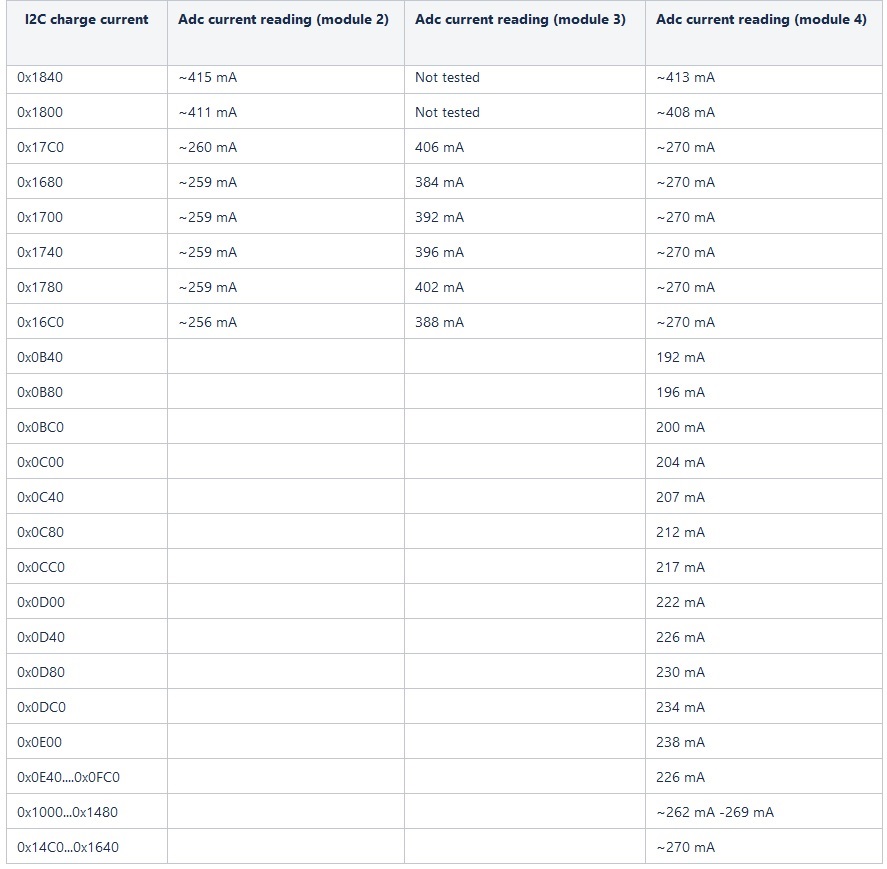Hi TI,
We have issue here in charging our batteries: as the charging current gradually increased to 260mA by tuning the register setting, all looked OK, however the current stopped increasing when reaching 260mA and started to increase again after the charging current register increased to 0x1780~0x1800, please refer the table below:
Just now sure if there are any sort of protection mechanism triggered in the charger providing the test result like this. Please note that we are using 0.15ohm output sensor in this BQ24725A charger design.
Thanks!



